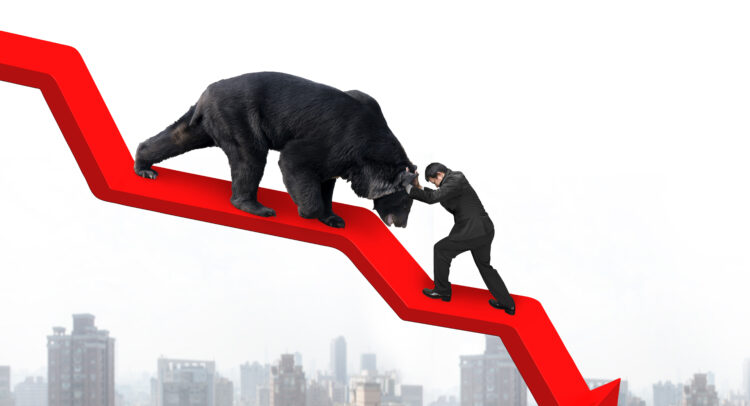Stocks have been getting battered, which always prompts investors to ask, “Should I buy the dip or run for safety?” There’s also the third reaction, which is “buy-and-hold.” For investors deciding on how best to react and seeking information to understand why the market is down, it can be helpful to gauge if the conditions are likely to continue or if they are continuing.
Claim 70% Off TipRanks This Holiday Season
- Unlock hedge fund-level data and powerful investing tools for smarter, sharper decisions
- Stay ahead of the market with the latest news and analysis and maximize your portfolio's potential
Alphabet and Tesla’s Results Lead Selling
This week’s sharp stock market decline, especially in the S&P 500 (SPX) and Nasdaq 100 (NDX), followed underwhelming quarterly results from Alphabet (GOOGL) and Tesla (TSLA). Alphabet’s stock fell 5% in earnings estimates due to lower-than-expected YouTube ad revenue and concerns over pouring money into artificial intelligence (AI) development, which has pinched cash flow. Tesla’s (TSLA) also took a bad turn; it had its worst day since 2020 as shares plummeted 12.3% after reporting a 45% drop in profit and missing earnings expectations.
These results started the ball rolling toward a broader sell-off in tech stocks, with Nvidia (NVDA) and Meta Platforms (META) also falling dramatically.
Economic Data Adds to Investor Concerns
Investors’ gloomy sentiments have been caused by mixed economic data. The popular leading indicator, the U.S. PMI flash, reported that the manufacturing output index unexpectedly slipped, indicating an economic contraction. When the number is below 50, it reflects a negative growth; this July, purchasing managers report fell to 49.5 from 52.1 in June. On top of this weak economic news, new home sales for June were below expectations.
These indicators, especially taken together, shout that there is a potential weakening in economic growth. This feeds into the overall trend toward market uncertainty.
High Valuations and Market Rotation
The broader market is also grappling with high valuations and the potential for a continued rotation away from mega-cap tech stocks. The “Magnificent Seven” stocks, which have driven much of the market’s gains this year, are now facing increased scrutiny and profit-taking as investors reassess their high expectations for AI-related growth.
This has shifted towards smaller-cap stocks and more cyclical market areas. Although this rotation has a short but continued trendline, value-oriented buyers seem to still be focusing on stocks with smaller market caps and lower price-to-earnings ratios (P/E). The shift away from high-value tech stocks reflects a growing caution among investors, which could prolong the market downturn.
Treasury Yields and Federal Reserve Policy
Treasury yields have also been a focal point, with the 10-year yield rising to a slight dip of 4.28%, as investors realize that a Fed easing of overnight rates has little impact on longer rates, which, if viewed as inflationary, may cause them to rise. Also feeding into the rising long-term rates is the massive growth of U.S. Treasury debt.
The debt is approaching $35 trillion, a subject of conversation on social media platforms. The direction of Treasury yields and Fed policy will be critical in shaping the market’s sentiment and determining whether the sell-off continues.
Market Indicators to Watch
Given these factors impacting market sentiment, the sell-off could continue downward if earnings from other major companies disappoint, economic data remains mixed, and investors’ sentiments towards high-growth tech stocks remain cautious. On the other hand, if the next batch of earnings reports or key economic numbers reverse the trend, the market could rejoice.
The market’s reaction to upcoming reports and data releases will be crucial in determining the near-term direction. Investors should closely monitor key indicators, including corporate earnings, economic data, and Federal Reserve communications, to gauge the likelihood of continued market declines.
















